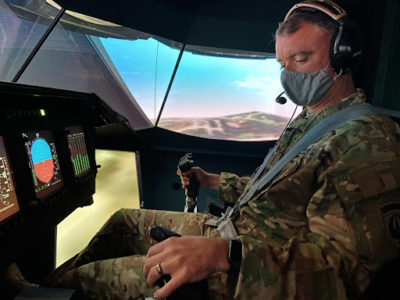Metis employees working on the Technical Services for Aerospace Systems Modeling and Simulation (SimLabs) III contract at NASA Ames Research Center (ARC) have received high praise from the U.S. Army for their role in successfully concluding advanced vertical-lift aircraft simulation testing. The testing, occurring as part of the Advanced Rotorcraft Configurations Test of Increased Capability (ARCTIC) project, utilized SimLabs’ Vertical Motion Simulation Complex (VMS) to collect data to support current and future research of advanced vertical-lift aircraft, like the Future Attack Reconnaissance Aircraft (FARA) and Future Long-Range Assault Aircraft (FLRAA). Twelve total pilots from the Army participated in the simulated flights, accumulating information critical for the development of future military flight systems and the evolution of U.S. National Defense.

Credits: U.S. Army
“I want to congratulate Metis employees working on ARCTIC for their tremendous success providing our Army partner with such a unique and valuable simulation, and for their significant contribution to the advancement of designs for advanced vertical-lift aircraft,” said Neil Otto, SimLabs Program Manager. “The innovative new VMS capabilities that our employees developed for this simulation were nothing short of eye-watering, creating one of the most challenging visual scenarios that we have ever run. Our own Emily Lewis was the Lead Simulation Engineer for ARCTIC. She has a long history of garnering high praise from Army researchers in the VMS simulations she leads. It’s no surprise that she was the recipient of the Metis Titan of Technical Leadership Award for 2021!”
NASA ARC and the U.S. Army often collaborate on research projects and utilizing VMS, which provides unequaled range of motion in the six ways an aircraft can move. The most recent collaboration was a six-week study in 2018 to explore how new Future Vertical Lift aircraft en-route speeds and long-range requirements affect low-speed maneuverability and agility. Researchers and pilots will recommence ARCTIC testing at the VMS in the Spring of 2022.
For more information, see:
AvMC across America: Moffett Field, California
Simulation provides Soldier touchpoints for future rotorcraft technology
